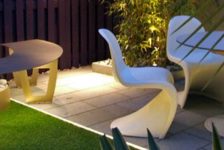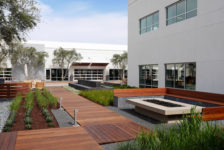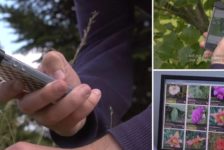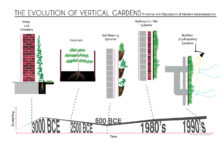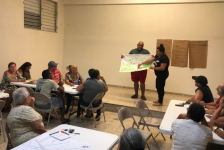Article by Giacomo Guzzon – Parson Green by Cityscapers, in London, England, shows us how to escape city stress and transform a back yard. Designing gardens is a very important aspect of our profession, because it allows landscape architects to test ideas and focus attention on particular hard and soft landscaping details that we can learn from and eventually use in the public realm. Parson Green, a small urban garden designed by Cityscapers and located in Hampstead, a wealthy area in northwest London, is a good example to analyze in order to understand what to consider when designing back yards.
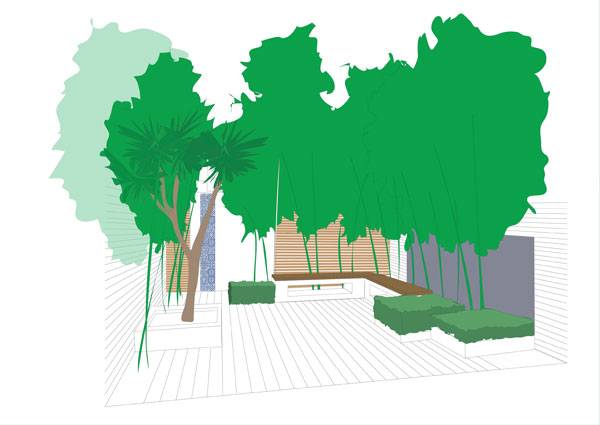
Digital model of Parson Green. Image courtesy of Cityscapers
Use Lots of Vegetation
It sounds obvious, but plants are the very essence of almost every garden, regardless of whether they are small, big, rural, or urban. Plants should always cover at least a third of the volume of the whole project; therefore, they are very important in giving character to a place. In Parson Green, since the garden covers an area of only 25 square meters, the plant palette is pretty simple, yet in some way exotic. In such projects, the rule to follow is: Less is more. It is much better to stick to one or two bold plants and repeat them throughout the garden rather than use many different ones. These plants will help to give a particular style or mood to
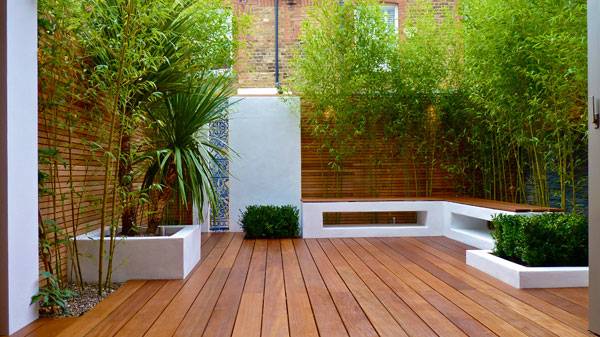
Image courtesy of Cityscapers
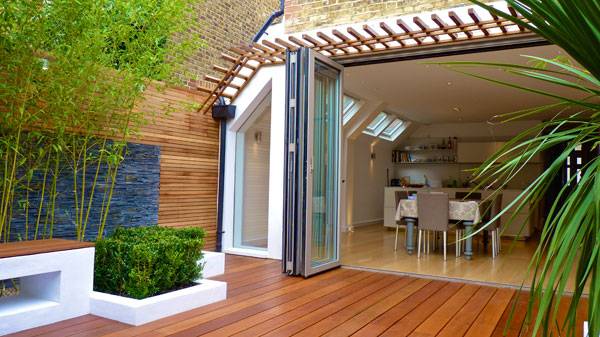
Image courtesy of Cityscapers
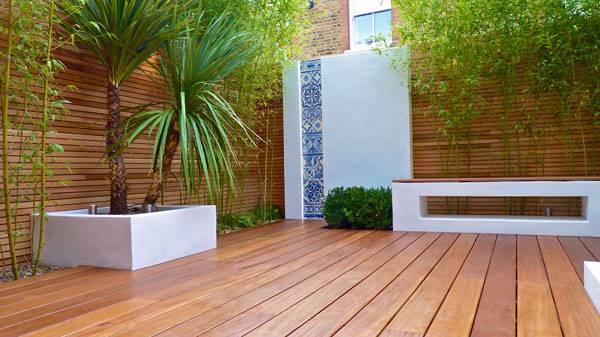
Image courtesy of Cityscapers
Juxtapose Particular Materials to Create
The minimalist style of Parson Green seen in the planting continues in the palette of hard materials. The only materials used are stone, cedar timber, and white walls. In this case, the juxtaposition of different materials that normally refer to a particular style — such as the white walls suggesting a Mediterranean/southern look — lend a cosmopolitan feel and make users forget that they are in London. In Parson Green, the combination of materials used is very particular and surely not common in other gardens in the area; this enhances the uniqueness of this space.
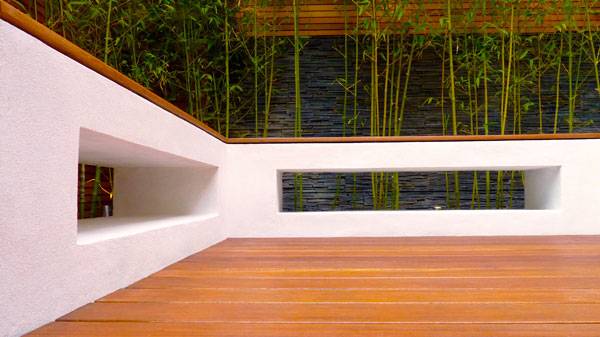
Image courtesy of Cityscapers
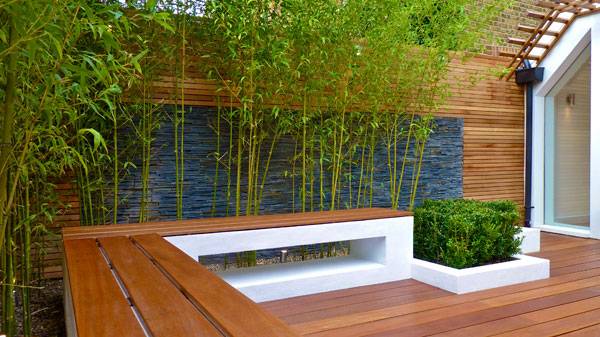
Image courtesy of Cityscapers
Link the Garden to the House
In cities where space is always limited, it is important to design the garden as an extension of the house, to make it another room where people can feel comfortable and use it as much as possible. In Parson Green, by using timber for flooring in both house and garden, the designer achieved a sense of continuity between the interior and exterior spaces. Don’t forget about the lighting, which not only extends the use of the space during the night, but also connects it with the adjacent living room. The spotlights placed within the bamboos and close to the stone-clad wall create a suggestive atmosphere by casting interesting shadows.
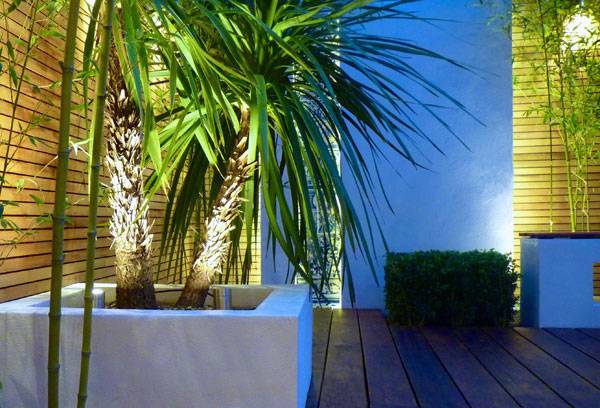
Image courtesy of Cityscapers
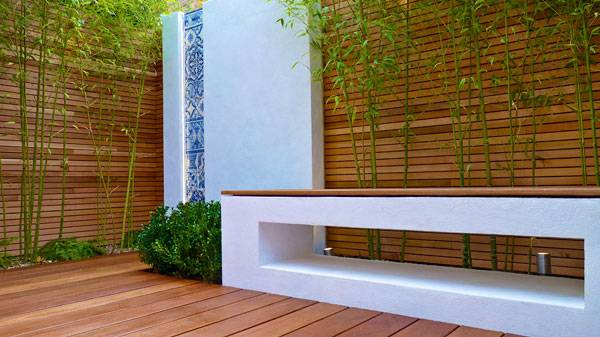
Image courtesy of Cityscapers
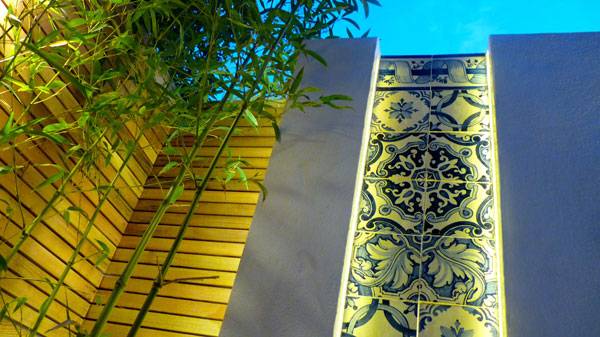
Image courtesy of Cityscapers
Full Project Credits For Parson Green :
Project: Parson Green Designer: Nigel Gomme @ Cityscapers Location: London, England Size: 25 square meters Completion Date: September 2014 Client: Private Photo Credits: Nigel Gomme and Edoardo Taricco Recommended Reading:
- Becoming an Urban Planner: A Guide to Careers in Planning and Urban Design by Michael Bayer
- Sustainable Urbanism: Urban Design With Nature by Douglas Farrs
- eBooks by Landscape Architects Network
Article by Giacomo Guzzon
Published in Blog


